| VIEW THIS EMAIL IN YOUR BROWSER > |
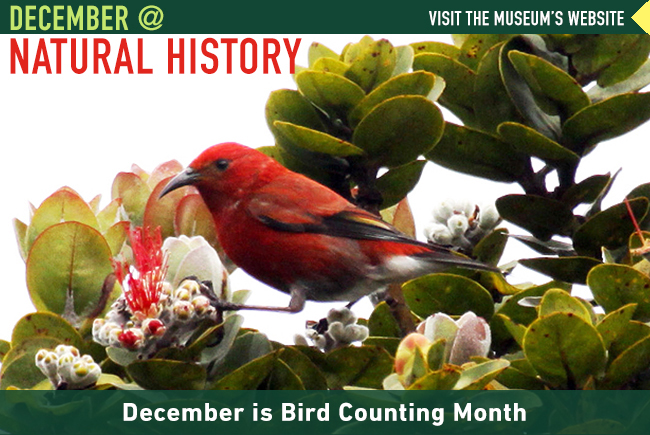 |
 |
|
 |
 Triceratops and T. rex in the exhibition, The Last American Dinosaurs. Photograph by Don Hurlbert, Smithsonian Institution. Triceratops and T. rex in the exhibition, The Last American Dinosaurs. Photograph by Don Hurlbert, Smithsonian Institution. |
The Last American Dinosaurs: Discovering a Lost World
|
Once There Were Billions: Vanished Birds of North America
|
66 million years ago, dinosaurs roamed what is now the Western interior of the U.S. Then, catastrophe ended their reign, leaving only a single group of dinosaurs--birds--to survive. 2nd Floor.
More >
|
The Passenger Pigeon, the Carolina Parakeet and the Great Auk, once plentiful in North America, were driven to extinction. Learn more about these and other vanished birds. Ground Floor.
More >
|
| MORE EXHIBITS > |
 |

Satellite image of Washington, DC, over the National Mall. Photo: Japan Space Imaging.
|
| The Anthropocene: Life in the Age of Humans -- Forests in the City |
Smithsonian Holiday Festival: Experience the Mall with More!
|
The importance of urban forests is growing as cities expand and city-dwellers become an ever-larger proportion of the world population. Smithsonian geographer Andrew Johnston discusses how satellite images are used to trace the history of urban forests over many decades, and how we can use these images to help understand the planet and ourselves.
Monday, December 15, 6 - 7:30 p.m.
Q?rius Theater, Ground Floor
Learn more and register >
|
Celebrate the season, Smithsonian-style. Join us for films, book signings, trunk shows and more. A shuttle bus will provide transportation between Museums on the National Mall.
Saturday and Sunday, December 6 & 7, 10 a.m. - 5:30 p.m., at Smithsonian Museums on the National Mall.
Learn more >
|
| MORE EVENTS > |
 |
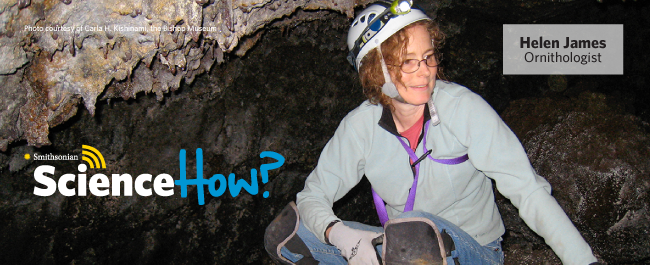
|
Live Webcast--Bird Extinctions: Time Travel through Lava Tubes
|
Students Become Forensic Detectives in "Bird Strike Whodunit" School Program
|
Meet ornithologist Helen James and learn about factors that make birds vulnerable to extinctions. Follow her into Hawaiian lava tubes to look for fossil evidence of bird life on the islands. See the modern tools and technologies used to interpret bird extinctions.
Thursday, December 11, at 11 a.m. and 2 p.m. EST
Learn more >
View the webcast live at qrius.si.edu/live >
|
During a 60-minute workshop for grades 6-12, students replicate a forensic ornithology case from the Museum's Feather Identification Lab and try to identify the species of bird remains found after a bird-airplane collision.
Learn more in the Q?rius Blog >
"Bird Strike Whodunit" is just one of six school programs offered in Q?rius on weekday mornings.
Explore all our offerings > |
| MORE EDUCATIONAL PROGRAMS > |
 |
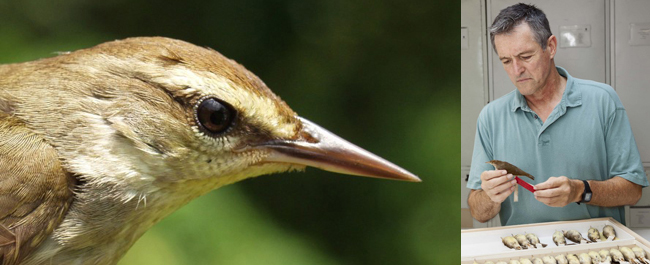
Swainsons Warbler and ornithologist Gary Graves. Photos by Gary Graves and Don Hurlbert, Smithsonian.
|
|
Rare Bird Population Found in a Surprising New Habitat |
How Do Vultures Live on a Diet that Would Kill Other Animals? |
Gary Graves, an ornithologist at the National Museum of Natural History, has discovered that a rare warbler is thriving by adapting to an unexpected environment.
Read more >
|
Graves and an international team of researchers discovered an answer to this question, which is now published in the scientific journal, Nature Communications.
Read about it in Smithsonian Science > |
| MORE RESEARCH > |
 |
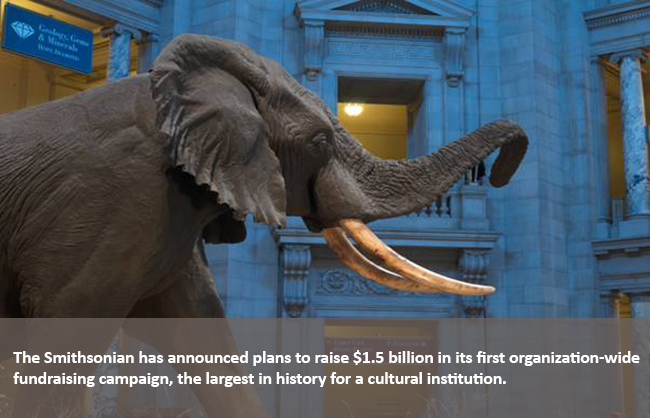
|
| Support the Museum Today |
Volunteer Opportunities
|
The Smithsonian Campaign will enable us to further global understanding about the origins and evolution of planets, species and cultures and inspire the next generation of scientists and citizens to create a sustainable future.
Learn more >
Help us reach our goal. Donate today >
|
Curious about cultures? Awed by animals? Share your enthusiasm with colleagues and visitors at the Natural History Museum!
Learn about volunteer opportunities > |
| MORE WAYS TO GET INVOLVED > |
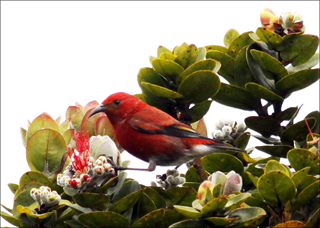
|
BANNER IMAGE:
An ‘apapane (Himatione sanguinea), a species of Hawaiian Honeycreeper, perched in an ‘ohi‘a (Metrosideros polymorpha) tree, Hawaii. The 'apapane population in Hawaii is stable, however, a subspecies, Himatione sanguinea freethi, went extinct in 1923. Learn about bird extinctions and their causes during a live webcast featuring ornithologist Helen James on December 11.
Photograph © Caleb Slemmons by Creative Commons license. Source:
Flickr: EOL Images.
Did you know the "Christmas Bird Count" begins on December 14? Learn about this 114-year-old citizen science project from Smithsonian Institution Archives>
|
|
|
© 2014 Smithsonian's National Museum of Natural History
10th St. and Constitution Ave., NW | Washington, DC 20013 |
CHANGE EMAIL PREFERENCES > |
|